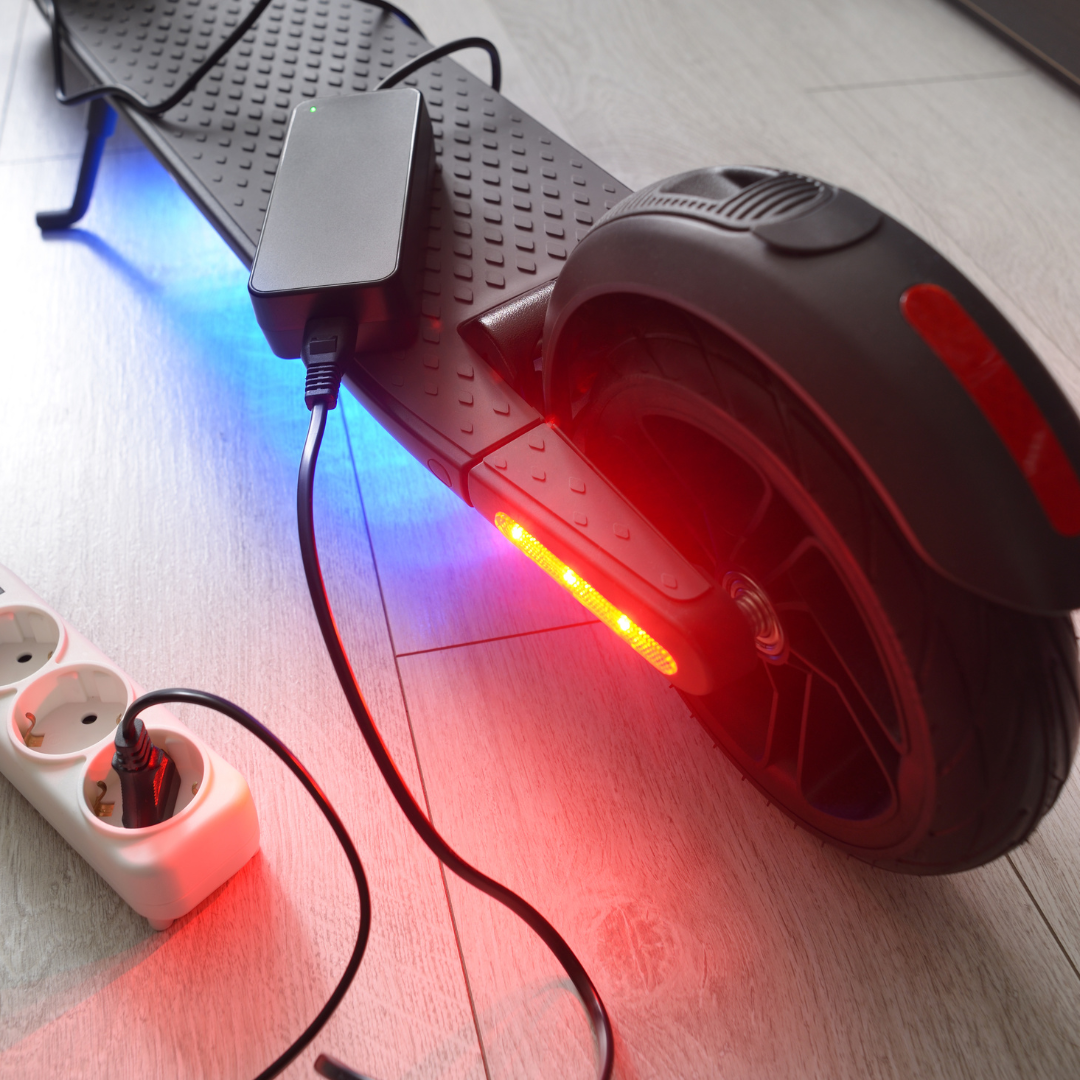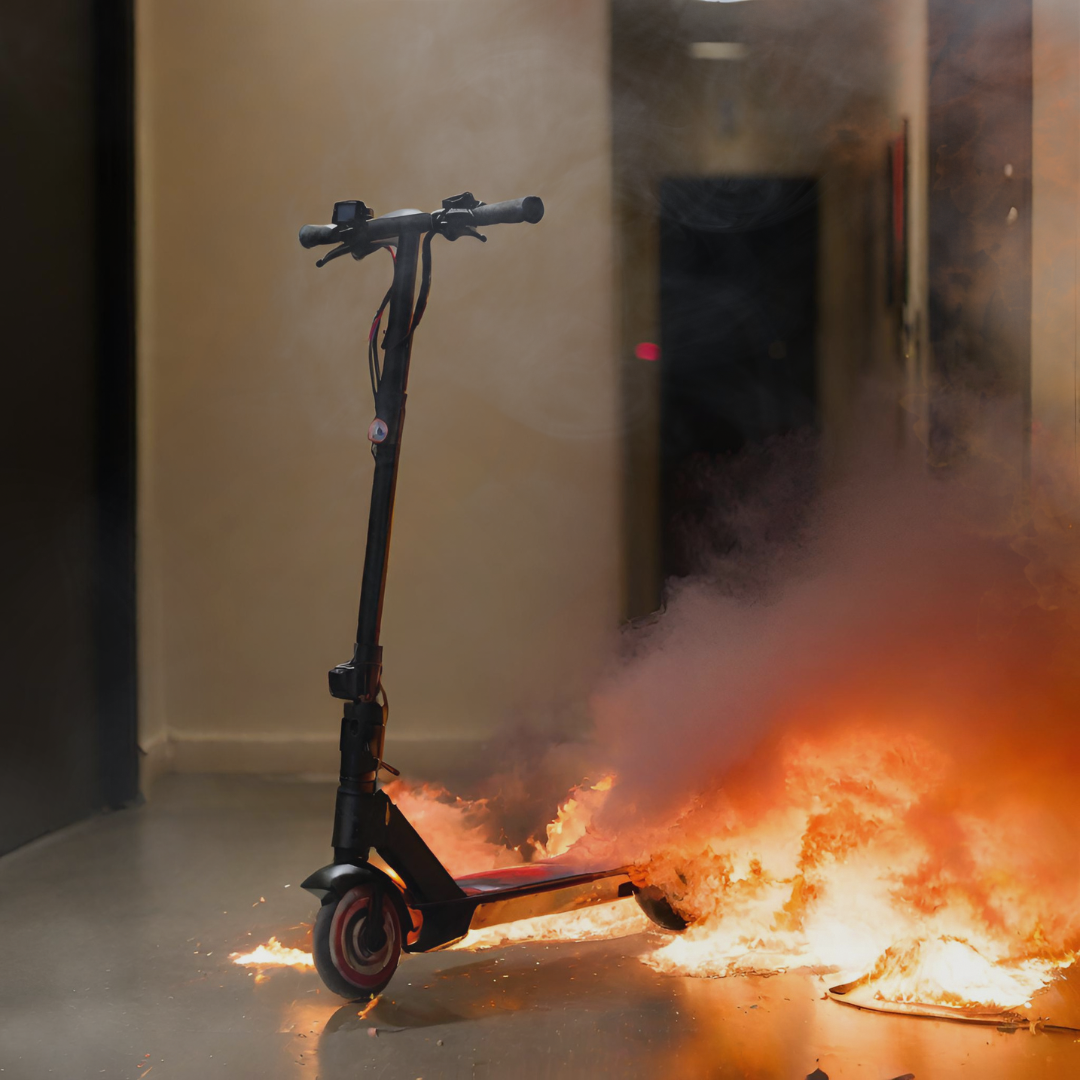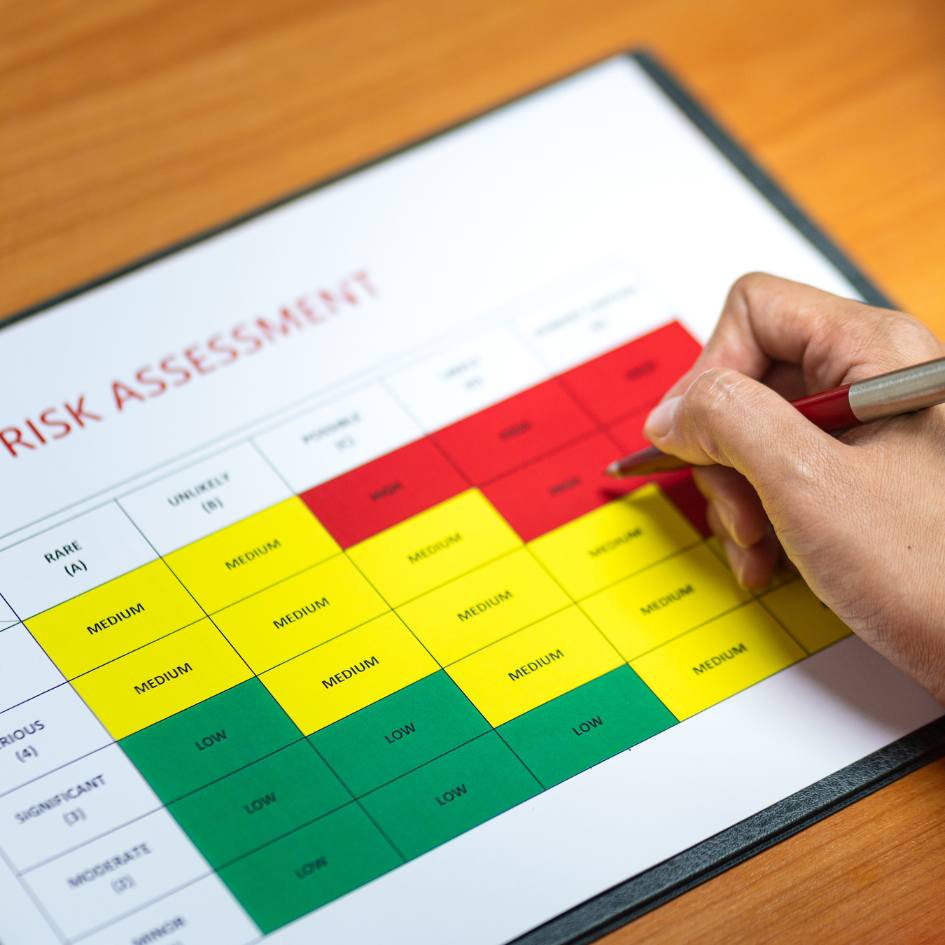Lithium batteries have revolutionised the way we power our portable electronic devices, electric vehicles e-bikes, and e-scooters, but along with their convenience comes a hidden danger. In recent years, the risks associated with lithium batteries have become a serious concern due to their potential to cause fires. Understanding what lithium batteries are, their uses, and the risks involved is crucial for both, your safety and the prevention of accidents.
What are Lithium Batteries?


I. What are lithium batteries?
Lithium batteries are rechargeable power sources commonly used in electronic devices and their counterparts Lithium-ion Batteries are not rechargeable. They utilise lithium, the lightest of metals to store and release energy, making them highly efficient and long-lasting. Due to their lightweight and compact design, they have become the preferred choice for numerous electronic devices.
II. Common uses and devices.
Lithium batteries are used worldwide in various consumer electronics including smartphones, laptops, tablets, digital cameras, power tools, e-bikes, e-scooters and even electric vehicles. Their ability to provide high energy density and a prolonged lifespan makes them ideal for powering these devices.
Risks of Lithium Batteries


III. Risks of lithium batteries.
a) Thermal Runaway: One of the biggest dangers associated with lithium batteries is the risk of thermal runaway. This occurs when the battery’s chemical reactions spiral out of control, leading to a rapid increase in temperature. This can cause the battery to explode or catch fire, posing a significant threat to both individuals and property.
b) Overheating: Lithium batteries can overheat due to factors such as overcharging, exposure to high temperatures, physical damage, or manufacturing defects. When a battery overheats, it can cause a fire, leading to potential injuries and property damage.
c) Short-circuiting: Another risk is the potential for short-circuits to occur. This can result from damage to the battery’s casing, the presence of metallic debris, or poor manufacturing. Short-circuits generate a significant amount of heat, increasing the chances of a fire.
IV. Severity of lithium battery fires.
Fires caused by these energy sources can be extremely dangerous due to the intense heat and toxic fumes they generate. These fires are difficult to extinguish, often requiring specialised equipment and techniques. They can quickly spread, engulfing property and endangering lives. In some cases, lithium battery fires have resulted in fatalities. These fires resulted in an average of 116 fires in London in 2022 according to the London Fire Brigade. This highlights the seriousness of the issue and the need for increased awareness and precautions.
E-scooters
&
E-bikes


VI. The impact of E-scooters and E-bikes
E-bikes and E-scooters have surged in popularity in recent years, powered by lithium batteries. However, the increasing use of these vehicles has also raised concerns about the safety risks associated with these batteries. Due to their compact design and proximity to the rider, fires caused by lithium batteries in e-bikes and e-scooters can lead to severe injuries. When purchasing your electric devices you should always visit 3rd party accredited providers and read the manufacturer manual before use.
How to decrease the risk?


VII. Minimising the risk.
a) Purchase Reputable Products: Always buy lithium battery devices from trusted manufacturers and retailers to minimise the risk of purchasing low-quality or counterfeit products.
b) Avoid Overcharging: Do not leave devices plugged in for extended periods or overnight, as overcharging can lead to overheating and potential fire hazards.
c) Use Proper Chargers: Only use chargers specifically designed for the device and battery type being charged. Mismatched chargers can overheat batteries.
d) Store and Dispose of Properly: Store lithium batteries in a cool, dry place and dispose of them in designated recycling centres. Avoid exposing them to extreme temperatures or physical damage.
e) Charging E-Scooters Outside: There has been a huge rise in fires caused by e-scooters in commercial buildings so when charging e-scooters, it is best practice to charge them outside or in well-ventilated areas to decrease the risk of severe fires indoors.
f) Fire Risk Assessment: Allowing a Fire Risk Assessment to be completed at your premises will detail any potential risks and the following measures to mitigate them. For more information about Fire Risk Assessments contact us at 01832735874 or email us at admin@hasaw.co.uk
It is essential to understand the potential dangers lithium batteries can pose. By being aware of the risks associated with power sources and having the appropriate measures in place, we can prevent accidents, protect ourselves and our properties, and continue enjoying the convenience and power these batteries can offer.





